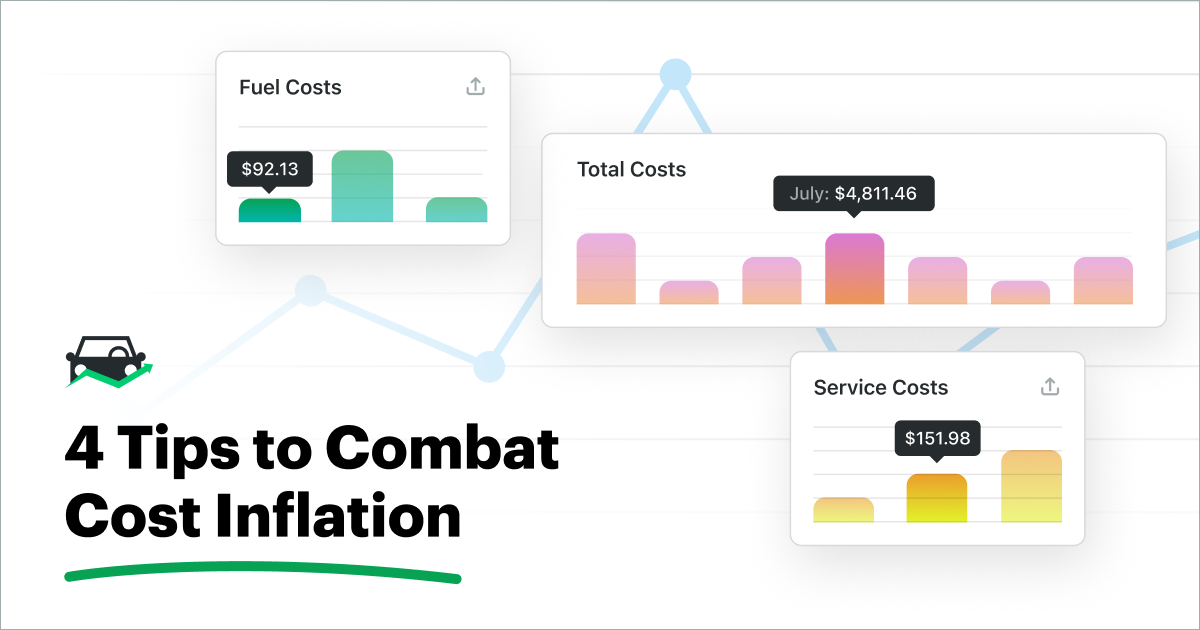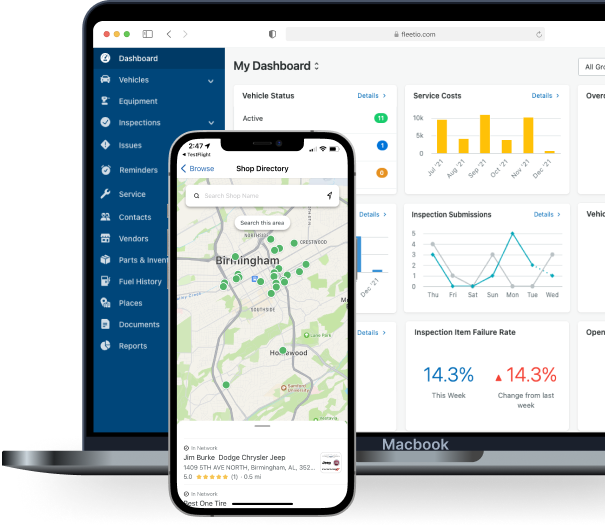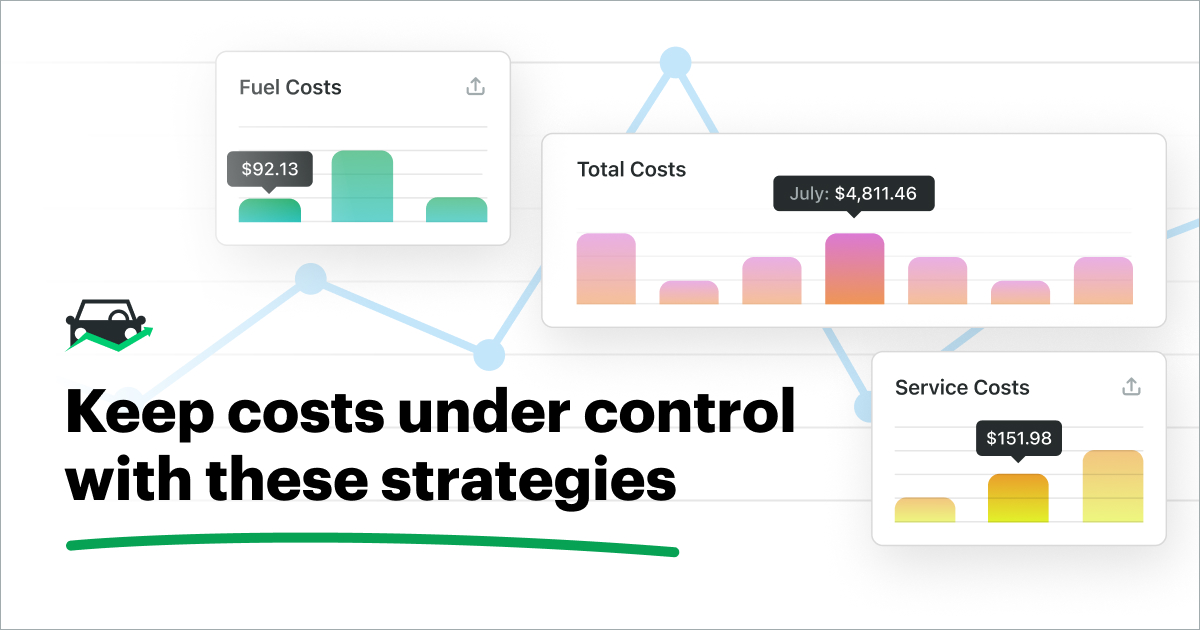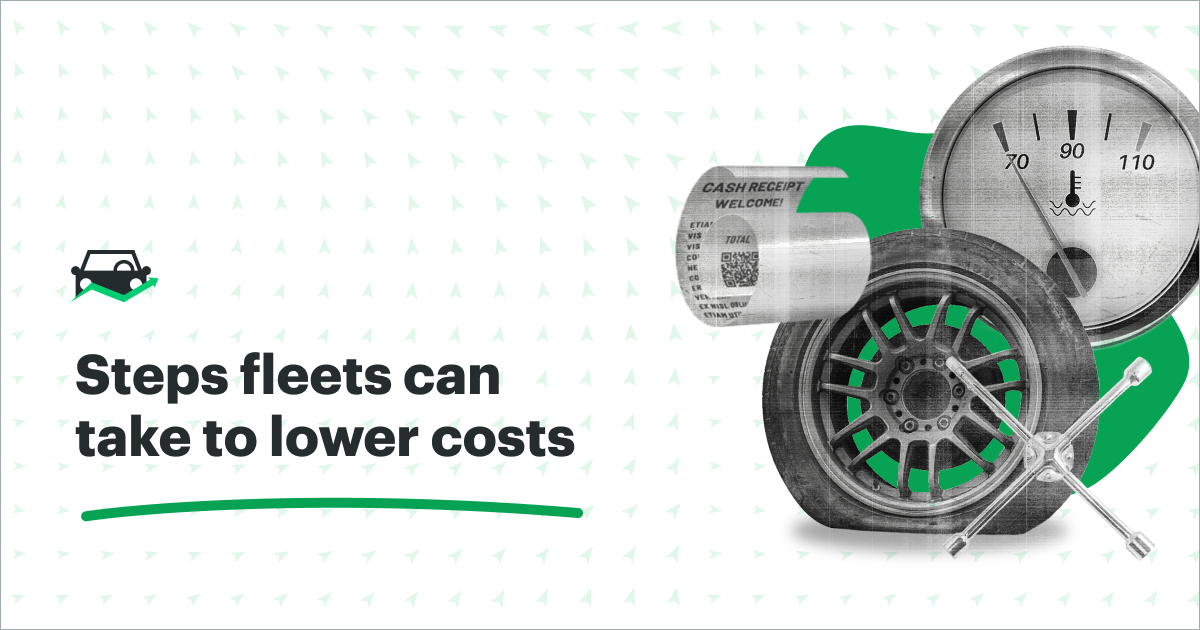With cost inflation affecting fleets across industries, companies may find it difficult to avoid passing higher prices on to their customers. To stay competitive, companies need to take proactive measures on strategizing a means to offset their higher fleet operating costs with inviting yet sustainable customer pricing and best-in-class customer service.

How Inflation has Impacted Fleets
Businesses across all industries are likely feeling the effects of inflation on their bottom line. For businesses relying on fleets to provide goods and services, it can be hard to maintain a profitable cost to sales ratio. Many factors have converged to cause record breaking inflation over the past couple of years, and with supply chain issues and asset procurement obstacles exacerbated by increasing demand, it looks to continue for some time.
Fleets — and businesses reliant upon them — can assess the effect of raising their service prices by using the price elasticity of demand formula: percent change in sales/services provided divided by percent change in price. If your total is one percent or less, the value of your service is inelastic. This means that demand is high enough (and your services unique enough) that a price change won’t significantly impact your customer volume. An elasticity score of over one percent means price increases will more likely lead to a decrease in customers.
Price elasticity is typically calculated after price changes; however, there are proactive steps you can take to predict and prevent a mass customer exodus before upping the cost for customers.
1. Increase the Longevity of Assets
A decrease in OEM rebates/discounts, plus increased asset procurement lead times and cost, have left some fleets having to adapt quickly to keep assets on the road longer. While assets in operation past their useful life can cost fleets thousands a year in service expenses, proper preventive maintenance (PM) can increase an asset’s useful life and prolong the need for replacement. To keep assets in safe, reliable condition for longer, fleets can determine optimal PM schedules based on service histories, inspections and operator and technician feedback.
2. Optimize Parts Acquisition, Inventory and Durability
Fleets that keep parts inventory in house have experienced the difficulty and increased cost of obtaining replacement parts for asset maintenance and repairs. Automotive parts continue to climb in price as demand consistently outweighs supply. Fleets can mitigate parts acquisition obstacles by following cost trends and determining the best time to purchase specific parts. Another factor in decreasing downtime and cost is to determine if buying in bulk or as needed is the best option for your fleet.
Well-stocked inventory means your assets are never sitting in the shop waiting on a part to resolve standard maintenance or recurring or high-fault issues. Fleets can optimize inventory on-hands by analyzing service histories to determine most and least used parts and number of parts used per time period (monthly, quarterly, etc.). Additionally, fleets can look at inventory activity and order list reports to see past trends in stock and movement. Inventory optimization isn’t the only way to combat price inflation, however. Acquiring parts durable enough to handle the daily grind can decrease replacement and service costs and improve uptime.
Find out how Fleetio can help you improve cost control.
Start personalized demo3. Track and Monitor Supply Cost, Effectiveness and Usage
Not only are fleet-run businesses having to adapt to inflation on the asset-related side, they also have to contend with the increased cost of supplies, from pest control chemicals to building materials and everything in between. Tracking the cost and effectiveness of supplies can help you determine whether switching brands or product types would make for a meaningful change.
By tracking and monitoring supplies-related data, including cost, quantity used per job and effectiveness of product, fleets can determine:
- Whether changing products is feasible and, indeed, profitable
- Whether supplies are being used inconsistently on similar or recurring jobs
- Whether increased accountability is needed to reduce product waste
4. Provide a Better Customer Experience
While you can take steps to avoid steep price increases for your customers, that won’t completely negate the need to raise service prices. Price increases are generally better accepted if the customer service level increases as well. By strategizing ways to become more customer focused, fleets can increase brand reputation and awareness. This is especially important for fleets with a price elasticity of demand over one percent, as customer service can be the differentiating factor between a consumer choosing your business or the competition’s.
Automate Fleet Data Tracking and Analysis with Fleet Solutions
Fleet management solutions, like integrated fleet management software (FMS), provide in-depth fleet performance monitoring and allow managers to track and analyze fleet data to improve operations. Fleets can determine their total cost of ownership (TCO) for assets to surface unnecessary spend, as well as collect detailed service, inspection and inventory histories to optimize PM schedules and properly stock parts. FMS also helps fleets keep track of supplies/products used per job and increase accountability to reduce unnecessary waste. While these features help reduce the impact of inflation, fleets can additionally use customizable inspections as surveys to elicit feedback from employees to bring both customer- and fleet-facing issues to the forefront.
Want to see how Fleetio can help you achieve success in combating inflation? Start your free trial or request a personalized demo today!




